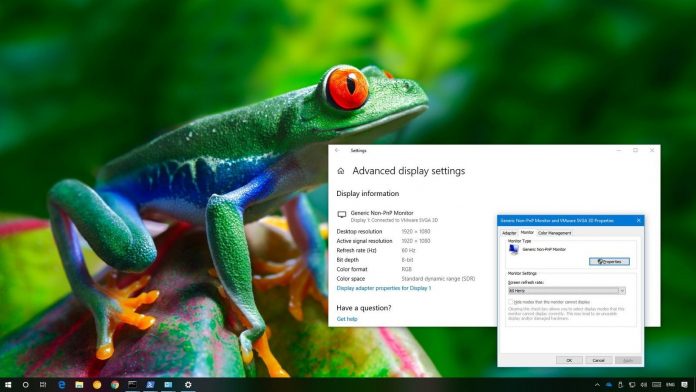The refresh rate of an image on your screen is the number of times it refreshes each second. This happens during a process measured in Hertz (HZ). If the refresh rate is higher on your monitor, your experience will be better. But if the refresh rate of your monitor is low, your screen might be flickering, and it can be the cause of your eye strain and headaches.
If your monitor has a refresh rate of 60 HZ or above, it is good enough for everyday use. You will see some jitters while moving the mouse, but if it is an optimal rate. If your monitor has a refresh rate below 60 HZ, then you will start experiencing problems.
Though 60 HZ should provide you with a good experience, things can be different if you are a gamer. Your monitor’s higher screen refresh rate, like 144 HZ or even 240 HZ, will give you a more smooth gaming experience.
Depending on the monitor, the graphics card, and the resolution of your monitor, it is possible to change the refresh rate manually.
Here, the necessary steps to change the refresh rate of your monitor.
How to change the refresh rate of your monitor manually:
If you are facing any monitor issues because of the refresh rate of your monitor, you can fix it. Go through these steps and set the refresh rate of your monitor to the most accurate rate.
- Open the Settings
- Click on the System
- Then click on the Display
- Next, Click the Advanced display settings link
- Now, click on the Display adapter properties for the Display 1 link.
- After that, click the Monitor tab.
- Under Monitor Settings, use the drop-down menu to select your desired refresh rate.
- Then click on the Apply button.
- Next, click the OK button.
After you have completed the steps, the monitor Will start using the new refresh rate that you’ve applied. You can fix your monitor’s flickering problem or your mouse’s jitter’s problem by following these simple steps.
The refresh rates you can choose will always be determined by your device’s monitor, resolution, and graphics adapter.
If your monitor can hold up a higher refresh rate, but you can not see the option there, check if you have the latest graphics driver. If not, then reinstall it. Also, you can try to set a lower resolution as sometimes displays can support a higher refresh rate on a lesser resolution.
While changing the screen refresh rate from 59 HZ to 60 HZ, the refresh rate slip back to 59 HZ. Nothing is surprising, this is a known behavior, and you don’t have to do anything in addition.
The reason for this kind of behavior is that some displays can not report 59.94 HZ, and when this happens, Windows might display two frequencies, 59Hz, and 60Hz for some compatibility reasons. Whatever it is, both 59 and 60 Hertz will set your monitor’s refresh rate to 59.94 HZ.
And in the case of a gaming monitor, follow the same steps and set the refresh rate of your monitor to 144 HZ, and it is better if you set the refresh rate of your monitor to 240 HZ. By doing this, your gaming will become more smooth. There will be no flickering, hanging, or restarting issues. While going through the process of changing the refresh rate of your monitor, if you see that your monitor is not supporting 144 HZ or 240HZ, make sure that you have the updated version of your graphics driver. Also, as the 60HZ process, you can lower down the resolution of your monitor and try again.
Experiencing difficulties with your Device, check out our “How To” page on how to resolve some of these issues.













